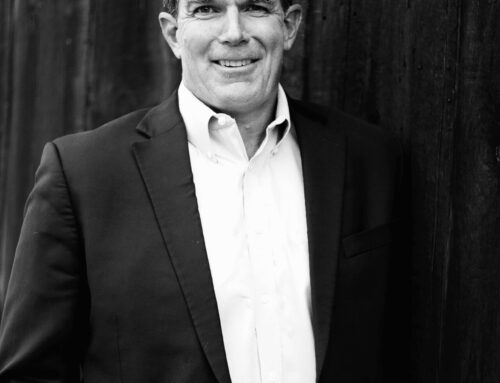The Magic Wand
If we could wave a magic wand and make the big problems in healthcare go away, would we? Should we? Recently I have seen and heard people talking about healthcare employment being a boon to the economy. At the same time, the requirement to lower the cost of healthcare is a near universal goal across all facets of the industry. This is all great, right? Driving the cost of healthcare down is great. People having jobs is absolutely great. But what do we really mean as an industry when we say really big and critically important things like “Healthcare as an economic engine” or “Lower the cost of healthcare”? And as key examples, could those two great things be so structurally incompatible that we would definitively have to choose one over the other?
The Numbers
A friend that works for a large employer told me recently that their data consistently showed 30% – 40% of their total spend on healthcare (and in some places even as high as 60%) was erroneous and unneeded. While this might seem completely shocking, let’s think about it for a minute: Everyone reading this has probably heard the stat from the federal government that reports wasteful spending in government sponsored health insurance segments being upwards of one-third of the total spend; so we’ve seen similar data before. Now apply this to the total numbers and let the shock come back: Healthcare is around $3.5 trillion in annual spend, or about 20% of the total US economy. If we use the government number, it means that we are throwing just under $1.2 trillion dollars a year down the proverbial toilet. Thought of another way: we could remove $1.2 trillion from the total spend and it would have little to no impact on the health status of all of us.
The Magic Wand
In a perfect world this is great, right? We know how big the problem is, so we just wave the wand and make the problem go away. Easy-peasey. Now let’s go back to the other part. The part about the jobs. There is a big, structural problem involved in that waste. Namely the people, jobs, livelihoods, infrastructure, revenue, profits – everything that makes up an industry – is all wrapped up in what encompasses that waste. If we had the solution to that waste – e.g. Just stop wasting! – we should just go and do it. Now think about that for a minute. If you went to the CEO’s of large healthcare companies and said “Eureka! We’ve got the solution. We’ll just cut your revenues, your headcount, and your total infrastructure by 33%, and we’re good!” What would the response be? There might be a lot of different responses, and my bet is that emotions such as “overjoyed”, and phrases like “extremely supportive” probably wouldn’t make the list. How about the government? We just have to tell the government that we are going to remove over 5% of our GDP – and all of the associated jobs, and then all of the associated and connected infrastructure and spending – and we’re good to go! Or maybe not.
The Reality
We all know the reality, right? Our industry is big, it’s complex, and it has all kinds of competing priorities across the spectrum. The truth is we have had a massive transfer of financial responsibility to the individual as a result of CDHP’s, and even with this there has been nary a dent in the preponderance of low and no-value care being ordered. This tells us that all of the initiatives that have been undertaken are not yet producing the desired results. To me this says that both the work that is underway is not being done at a scale that can have an impact, and that we aren’t doing all the right things yet. Over the past five years I have seen nearly every consumer-oriented solution that has come down the pike. The vast majority, while well intentioned, had little to no hope of addressing the real problems we all face, because they simply didn’t know what problem they were fixing or how to measure their impact. In short: They create more waste.
What to do about it
It’s hard to know where to start. I believe, however, there are four guiding principles that can be useful as we work our way into the future:
Let Efficiency be your guide
- DO: Explore every idea that helps accomplish the same or better result with fewer resources. The relentless focus on efficiency, doing more with less, is the hallmark of every great manager and every great company, regardless of industry.
- DON’T: Prejudge the outcome. An arbitrary view of how a team, a company, or an industry is “supposed” to look – how big, how many people, how much revenue – never works. It simply delays and compounds the day of reckoning.
Let Effectiveness be your goal
- DO: Begin every new initiative with the end in mind by setting specific, business-advancing targets that can be tracked and used to build the business intelligence of your team.
- DON’T: Accept any scenario that does not clearly declare winning and losing. The result is business functions and processes that exist on their own inertia, rather than on the real value that they create.
Put the docs (and their teams) in charge
- DO: Be a part of the real triple aim in healthcare – Person, Provider, Payer. In every scenario, and in studies across decades we see that the most impactful event in a person’s health is having a close relationship with a great Provider. Identifying, rewarding, and even building these types of Providers, getting people to those Providers, and helping those Providers work together, should be most important goals in healthcare.
- DON’T: Allow the status quo to rule. Current relationships, contracts, and financial / business arrangements are important, but if they end up blocking innovation and advancement then we are surrendering our ability to improve the industry and truly help people.
Get help!
- DO: Look for partners, inside and outside your team and company, that align to the three “DO’s” above. Partners that thrive on being measured (empirical improvement), on winning in their domains and areas of expertise, and that are committed to both your success and to putting their money where their mouths are in making a positive difference for the people we all serve.
- DON’T: Believe for an instant that we can’t do this. Combining clear objectives with a little bit of courage can produce amazing results. Most of the pieces are already on the board for us – it’s about putting them together.
While all the above requires a lot more work than just waving a magic wand, in the end we build businesses and an entire industry that does the job it was meant to do, at a price that people can actually afford to pay. Most importantly: We do all of that while still incentivizing the innovation that has created the most advanced healthcare capabilities in the world.
Mark is a Senior Growth Adviser with Leverage Health and can be reached at **@************th.com“>ma**@************th.com.







Stay In Touch